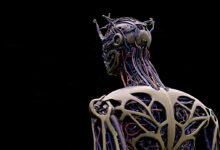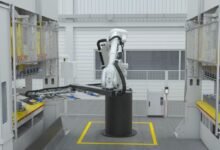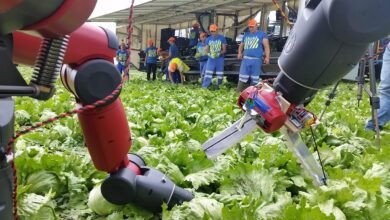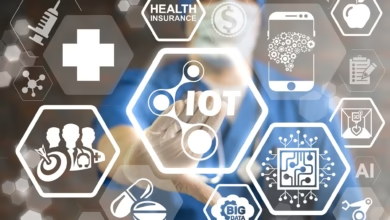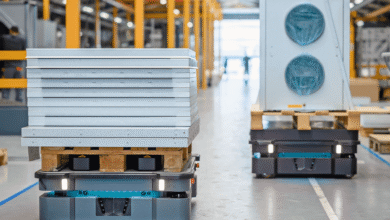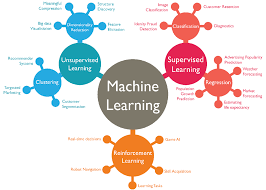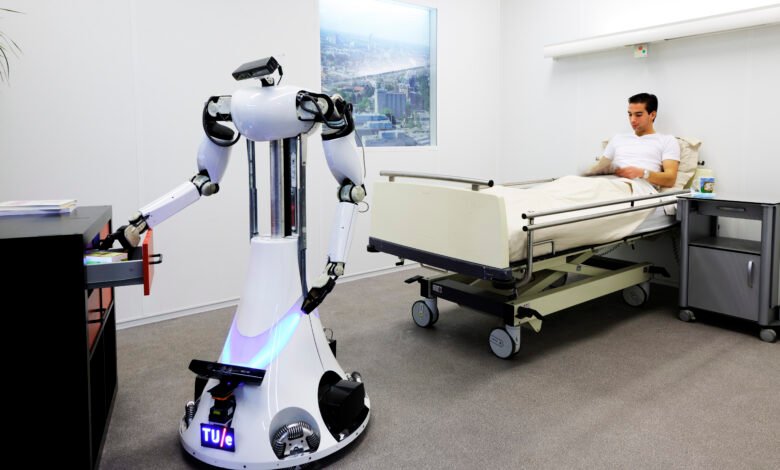
The integration of robotics in healthcare has revolutionized modern medicine, transforming how medical professionals deliver patient care and perform complex surgical procedures. From sophisticated surgical robots that enhance precision during operations to intelligent patient care systems that monitor vital signs and assist with rehabilitation, robotic technology has become an indispensable component of contemporary healthcare infrastructure.
The medical robotics market has experienced unprecedented growth, with industry analysts projecting the global market value to reach approximately $76.45 billion by 2030, representing a compound annual growth rate (CAGR) of 16.55%. This remarkable expansion reflects the increasing adoption of Robotics in Healthcare across hospitals, surgical centers, and specialized medical facilities worldwide.
Healthcare robotics encompasses a diverse range of applications, including minimally invasive surgery, robot-assisted procedures, rehabilitation robotics, telemedicine robots, and hospital automation systems. These technological innovations address critical challenges in healthcare delivery, such as improving surgical accuracy, reducing human error, enhancing patient outcomes, and addressing the growing shortage of healthcare professionals.
The evolution of robotics in Healthcare has been particularly significant in surgical applications, where systems like the da Vinci surgical system have established new standards for precision and control. These advanced platforms enable surgeons to perform complex procedures through small incisions, resulting in reduced patient trauma, shorter recovery times, and improved overall outcomes.
Beyond surgical applications, patient care robotics has emerged as a transformative force in healthcare delivery. From automated medication dispensing systems to companion robots that provide emotional support for elderly patients, these technologies are reshaping the patient experience while optimizing operational efficiency in healthcare facilities.
The convergence of artificial intelligence, machine learning, and advanced sensors has accelerated the capabilities of healthcare automation, creating intelligent systems that can adapt to patient needs, predict medical complications, and provide real-time assistance to medical professionals. As we move forward, the integration of robotics technology in healthcare promises to deliver more personalized, efficient, and accessible medical care for patients worldwide.
The Evolution of Medical Robotics Technology
The journey of robotics in healthcare began in the 1980s with the introduction of the first medical robots designed to assist with neurosurgical procedures. The PUMA 560, originally an industrial robot, was adapted for medical use and became the first robotic system to perform a neurosurgical biopsy in 1985. This pioneering achievement laid the foundation for the sophisticated surgical robots we see in modern operating rooms today.
Throughout the 1990s, Robotics in Healthcare technology experienced significant advancement with the development of specialized robotic systems for various surgical disciplines. The introduction of the da Vinci surgical system by Intuitive Surgical in 2000 marked a watershed moment in robot-assisted surgery, establishing the gold standard for minimally invasive surgical procedures. This revolutionary platform demonstrated the potential of surgical robotics to enhance precision, reduce patient trauma, and improve clinical outcomes.
The 2000s witnessed rapid expansion in Robotics in Healthcare applications beyond surgery. Rehabilitation robots emerged to assist patients recovering from strokes, spinal cord injuries, and other neurological conditions. Telemedicine robots enabled remote patient consultation and monitoring, while hospital automation systems streamlined pharmaceutical dispensing and inventory management processes.
Recent developments in artificial intelligence and machine learning have further accelerated the evolution of Robotics in Healthcare. Modern robotic systems incorporate advanced computer vision, natural language processing, and predictive analytics to provide intelligent assistance to healthcare professionals. These AI-powered medical devices can analyze patient data in real-time, assist with diagnostic procedures, and even predict potential complications before they occur.
The integration of Internet of Things (IoT) technology has enabled the development of interconnected patient care systems that can communicate seamlessly with electronic health records, monitoring devices, and other medical equipment. This connectivity enhances the coordination of care and provides healthcare teams with comprehensive patient information at the point of care.
Surgical Robotics: Precision and Innovation in the Operating Room
Surgical robots have fundamentally transformed modern operating rooms, offering unprecedented levels of precision, control, and visualization for complex procedures. The da Vinci surgical system remains the most widely adopted robotic surgical platform, with over 7,000 systems installed globally and more than 12 million procedures performed using this technology.
Advanced Surgical Capabilities
Modern surgical robotics systems provide several key advantages over traditional surgical approaches. Robot-assisted surgery enables surgeons to perform procedures through smaller incisions, resulting in reduced blood loss, decreased post-operative pain, and faster patient recovery times. The enhanced 3D visualization and magnified surgical views allow for more precise tissue manipulation and improved surgical outcomes.
Minimally invasive surgery has been revolutionized by robotic technology, particularly in disciplines such as urology, gynecology, cardiothoracic surgery, and general surgery. Robotic prostatectomy, robotic hysterectomy, and robotic cardiac valve repair have become standard procedures in many leading medical centers, demonstrating the versatility and effectiveness of surgical robots.
Emerging Surgical Robotic Platforms
The medical robotics market continues to evolve with the introduction of innovative surgical systems designed for specific applications. Orthopedic robots like the MAKO system provide precise guidance for joint replacement procedures, while neurosurgical robots such as the Neuromate enable accurate electrode placement for deep brain stimulation procedures.
Microsurgical robots represent the cutting edge of surgical precision, enabling procedures on structures measured in millimeters or micrometers. These advanced robotic systems incorporate haptic feedback technology and ultra-precise actuators to perform delicate procedures such as retinal surgery and cochlear implant placement.
Integration with Artificial Intelligence
The convergence of artificial intelligence and Robotics in Healthcare has created intelligent robotic systems capable of learning from surgical data and providing real-time guidance to surgeons. AI-enhanced surgical robots can analyze tissue characteristics, predict surgical outcomes, and even suggest optimal surgical approaches based on patient-specific data.
Machine learning algorithms integrated into surgical platforms can process vast amounts of surgical video data to identify best practices and potential complications. This AI-powered analysis helps standardize surgical techniques and improve training programs for surgical residents and fellows.
Patient Care Robotics: Enhancing Healthcare Delivery
Patient care robotics extends far beyond surgical applications, encompassing a broad spectrum of technologies designed to improve healthcare delivery, patient experience, and clinical outcomes. These robotic systems address critical challenges in healthcare, including staff shortages, patient safety, and the need for consistent, high-quality care.
Hospital Automation and Service Robots
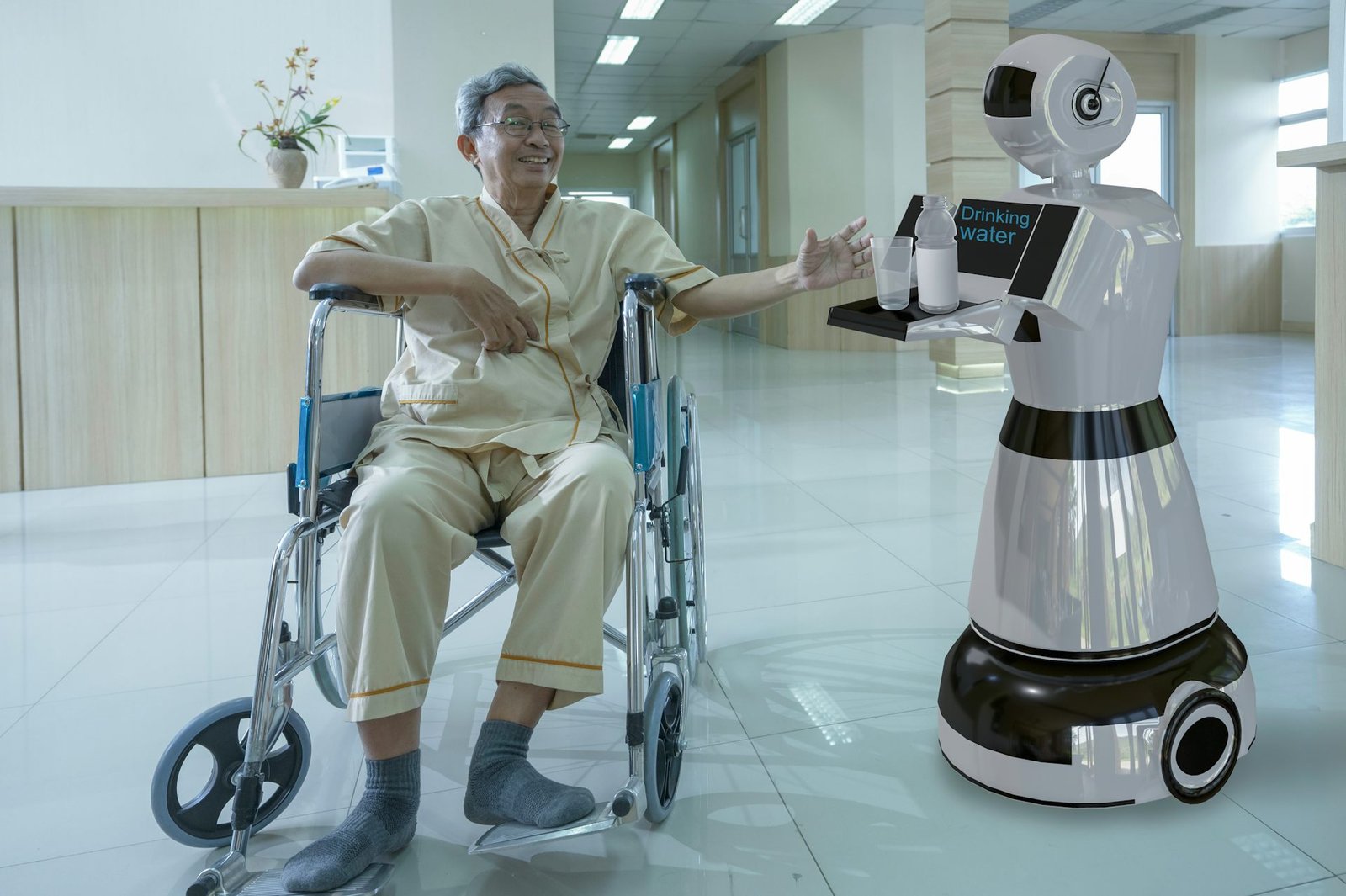
Hospital automation robots have become essential components of modern healthcare facilities, streamlining operations and reducing the burden on healthcare staff. Automated medication dispensing systems ensure accurate drug delivery while maintaining detailed records of pharmaceutical inventory and usage patterns. These robotic pharmacy systems significantly reduce medication errors and improve patient safety.
Service robots perform various non-clinical tasks within healthcare facilities, including automated transport systems for medical supplies, laboratory specimens, and patient meals. Cleaning and disinfection robots utilize advanced UV sterilization technology to maintain sterile environments, particularly crucial in operating rooms and intensive care units.
Rehabilitation and Therapy Robotics
Rehabilitation robots play a crucial role in helping patients recover from neurological injuries, orthopedic procedures, and other debilitating conditions. Robotic exoskeletons enable patients with spinal cord injuries to regain mobility and participate in walking therapy programs. These assistive technologies provide precise control over movement patterns and can adapt to individual patient progress.
Physical therapy robots offer consistent, repetitive motion training for patients recovering from strokes or traumatic brain injuries. Upper extremity rehabilitation robots like the InMotion ARM provide targeted therapy for arm and hand function recovery, while gait training robots help patients relearn walking patterns after neurological damage.
Elderly Care and Companion Robots
The aging global population has created increased demand for elderly care robots that can provide assistance and companionship for older adults. Companion robots offer emotional support, medication reminders, and emergency assistance while maintaining the dignity and independence of elderly patients.
Social robots equipped with natural language processing capabilities can engage in conversations, play games, and provide cognitive stimulation for patients with dementia and Alzheimer’s disease. These therapeutic robots have demonstrated significant benefits in reducing anxiety, depression, and social isolation among elderly patients.
Types of Medical Robots and Their Applications
The medical robotics landscape encompasses diverse categories of Robotics in Healthcare, each designed to address specific healthcare challenges and applications. Understanding these different types of medical robots provides insight into the comprehensive impact of robotics technology across the healthcare continuum.
Diagnostic and Imaging Robots
Diagnostic robots enhance medical imaging and diagnostic procedures through precise positioning and advanced image processing capabilities. Robotic X-ray systems can automatically position patients and imaging equipment to optimize image quality while reducing radiation exposure. MRI-compatible robots enable targeted biopsies and therapeutic interventions within the magnetic field environment.
Ultrasound robots provide consistent imaging quality and can be operated remotely, enabling telemedicine applications in underserved areas. These automated imaging systems reduce operator variability and improve diagnostic accuracy through standardized imaging protocols.
Laboratory Automation Robots
Laboratory robots have revolutionized clinical diagnostics by automating sample processing, analysis, and result reporting. Automated laboratory systems can process thousands of samples daily with minimal human intervention, significantly reducing turnaround times and improving laboratory efficiency.
Specimen handling robots ensure proper sample identification and tracking throughout the analytical process, reducing the risk of sample mix-ups and improving patient safety. High-throughput screening robots enable rapid analysis of multiple biomarkers, supporting personalized medicine initiatives and drug discovery research.
Emergency Response and Trauma Care Robots
Emergency medical robots provide critical support during disaster response and trauma care situations. Mobile medical robots can be deployed to hazardous environments where human responders face significant risks, such as chemical spills, radiation exposure, or infectious disease outbreaks.
Trauma care robots assist with life support functions and patient stabilization during transport to medical facilities. These portable medical systems can monitor vital signs, administer medications, and provide advanced life support capabilities in challenging environments.
Benefits and Advantages of Healthcare Robotics
The implementation of robotics in healthcare delivers numerous benefits that extend across clinical, operational, and economic dimensions. These advantages have driven the widespread adoption of medical robots and continue to fuel innovation in healthcare robotics.
Enhanced Precision and Accuracy
Surgical robots provide unprecedented precision in medical procedures, eliminating the natural tremor of human hands and enabling millimeter accuracy in surgical movements. This enhanced precision is particularly valuable in neurosurgery, ophthalmology, and microsurgery applications where small margins of error can have significant clinical consequences.
Robotics in Healthcare maintains consistent performance throughout lengthy procedures, avoiding the fatigue that can affect human surgeons during complex operations. This consistency translates to improved surgical outcomes and reduced complication rates across various surgical specialties.
Improved Patient Safety and Outcomes
Medical robotics significantly enhances patient safety through multiple mechanisms. Automated medication systems virtually eliminate dosing errors and drug interactions, while robotic surgical systems reduce the risk of surgical site infections through minimally invasive approaches.
Patient monitoring robots provide continuous surveillance of vital signs and can detect changes in patient condition before they become critical. This early warning capability enables prompt intervention and prevents adverse events that could lead to patient harm or extended hospital stays.
Reduced Healthcare Costs
While the initial investment in robotic technology is substantial, Robotics in healthcare delivers significant long-term cost savings through improved efficiency and reduced complications. Minimally invasive robotic surgery typically results in shorter hospital stays, reduced need for pain medications, and faster return to normal activities.
Hospital automation robots reduce labor costs and improve resource utilization through optimized workflow management and inventory control. Pharmaceutical robots minimize drug waste and ensure optimal inventory levels, contributing to overall cost reduction in healthcare operations.
Enhanced Quality of Life for Patients
Rehabilitation robots enable patients to achieve functional improvements that may not be possible with traditional therapy approaches. Robotic exoskeletons restore mobility to paralyzed patients, while prosthetic robots provide natural movement patterns for amputees.
Companion robots address the psychological and social needs of patients, particularly elderly individuals who may experience isolation and loneliness. These therapeutic relationships with social robots have demonstrated measurable improvements in patient mood, cognitive function, and overall well-being.
Current Market Trends and Industry Growth
The medical robotics market continues to experience robust growth driven by technological advancement, increasing healthcare demands, and growing acceptance of robotic technology among medical professionals and patients. Market research indicates that the global healthcare robotics sector will reach unprecedented levels of investment and adoption over the coming decade.
Market Size and Growth Projections
Current market analysis reveals that the medical robots market achieved a valuation of approximately $31.11 billion in 2024, with projections indicating continued expansion to reach $145.7 billion by 2035. This represents a compelling compound annual growth rate of 15.2%, reflecting the accelerating adoption of robotic systems across healthcare facilities worldwide.
Surgical robots dominate the market, accounting for approximately 65% of total medical robotics revenue. The rehabilitation robots segment is experiencing the fastest growth rate, driven by an aging population and increasing prevalence of neurological disorders requiring assistive technologies.
Regional Market Dynamics
North America maintains the largest share of the Robotics in Healthcare market, accounting for approximately 45% of global revenue. The region’s dominance is attributed to advanced healthcare infrastructure, high healthcare spending, and early adoption of innovative medical technologies. The United States leads in both surgical robot installations and robotic procedure volumes.
The Asia-Pacific region represents the fastest-growing market for Robotics in Healthcare, with countries like Japan, China, and South Korea investing heavily in healthcare automation and robotic technology. Government initiatives promoting digital healthcare transformation and aging population demographics drive this regional growth.
Investment and Innovation Trends
Venture capital and private equity investment in Robotics in Healthcare startups has reached record levels, with over $2.8 billion invested in 2024 alone. Artificial intelligence integration, cloud-based robotics platforms, and autonomous medical systems represent the most attractive investment categories for healthcare technology investors.
Strategic partnerships between traditional medical device manufacturers and technology companies are accelerating innovation in healthcare robotics. These collaborations combine medical expertise with advanced AI capabilities and robotic engineering to create next-generation medical robots.
Challenges and Limitations in Medical Robotics
Despite the significant benefits and rapid growth of robotics in healthcare, the industry faces several challenges that must be addressed to realize the full potential of medical robotics technology. These limitations span technical, regulatory, economic, and social dimensions.
Technical and Engineering Challenges
Robotics in Healthcare requires sophisticated integration with existing hospital information systems and electronic health records. Interoperability challenges can limit the effectiveness of medical robots and create workflow disruptions if not properly addressed during implementation.
Battery life and power management remain significant constraints for mobile medical robots, particularly in applications requiring extended operation periods. Wireless communication reliability and data security concerns also present ongoing technical challenges for connected robotic systems.
High Implementation Costs
The substantial capital investment required for surgical robots and advanced Robotics in Healthcare creates barriers to adoption, particularly for smaller healthcare facilities and developing countries. Training costs for medical staff and ongoing maintenance expenses add to the total cost of ownership.
Return on investment calculations must account for procedure volumes, reimbursement rates, and operational efficiency gains to justify robotic technology purchases. Some healthcare systems struggle to achieve positive ROI within reasonable timeframes, limiting widespread adoption.
Regulatory and Compliance Requirements
Medical robots must undergo rigorous FDA approval processes and comply with stringent safety standards before clinical deployment. Regulatory pathways for AI-enhanced medical devices remain complex and evolving, potentially delaying the introduction of innovative robotic technologies.
Cybersecurity regulations for connected medical devices continue to evolve, requiring manufacturers to implement robust security measures throughout the product lifecycle. Data privacy requirements add additional compliance complexity for patient care robots.
Workforce Adaptation and Training

Healthcare professionals require extensive training to effectively utilize robotic systems, creating temporary disruptions in clinical workflows during implementation phases. Change management challenges can slow adoption rates and limit the realized benefits of medical robotics investments.
Some medical professionals express concerns about job displacement due to healthcare automation, although evidence suggests that robotic technology typically augments rather than replaces human capabilities in clinical settings.
Future Innovations and Technological Developments
The future of robotics in healthcare promises unprecedented innovations that will further transform medical practice and patient care. Emerging technologies and research developments indicate that medical robotics will become increasingly intelligent, autonomous, and integrated into healthcare delivery systems.
Artificial Intelligence Integration
AI-powered surgical robots will incorporate machine learning algorithms capable of analyzing surgical techniques, predicting complications, and providing real-time guidance to surgeons. Computer vision systems will enable robotic assistants to identify anatomical structures, track surgical instruments, and alert surgeons to potential safety concerns.
Natural language processing capabilities will allow medical robots to understand and respond to voice commands, enabling hands-free operation during surgical procedures. Predictive analytics integrated into patient care robots will anticipate patient needs and automatically adjust care protocols based on individual patient responses.
Autonomous Medical Systems
Fully autonomous surgical robots capable of performing routine procedures with minimal human oversight represent the next frontier in surgical robotics. These systems will leverage advanced sensors, robotic vision, and AI decision-making to execute standardized surgical protocols with superhuman precision and consistency.
Autonomous medication robots will manage entire pharmaceutical workflows, from inventory management to patient-specific drug preparation and delivery. Smart hospital robots will coordinate multiple care activities and adapt to dynamic hospital environments without human intervention.
Nanotechnology and Microrobotics
Medical nanotechnology will enable the development of microscopic robots capable of performing cellular-level interventions. Nanorobots could deliver targeted drug therapy, repair damaged tissues, and remove arterial plaques through minimally invasive approaches that exceed current medical capabilities.
Swarm robotics applications in healthcare will coordinate multiple microrobots to perform complex therapeutic procedures, such as targeted cancer treatment and neural repair. These collaborative robotic systems will work together to achieve therapeutic goals that individual robots cannot accomplish alone.
Personalized Robotic Medicine
Patient-specific robots will be customized based on individual anatomy, genetics, and medical history to provide personalized therapeutic interventions. 3D printing technology will enable on-demand manufacturing of prosthetic devices and assistive robots tailored to each patient’s unique requirements.
Adaptive robotic systems will learn from patient responses and continuously optimize therapeutic protocols to maximize clinical outcomes. Personalized rehabilitation robots will adjust exercise programs in real-time based on patient progress and physiological responses.
Implementation Strategies for Healthcare Organizations
Successful deployment of robotics in healthcare requires comprehensive planning, stakeholder engagement, and strategic implementation approaches. Healthcare organizations must consider multiple factors when integrating medical robots into existing clinical workflows and operational systems.
Strategic Planning and Assessment
Healthcare organizations should conduct thorough needs assessments to identify specific applications where robotic technology can deliver maximum value. Cost-benefit analyses must account for initial investment costs, ongoing operational expenses, training requirements, and projected clinical and financial outcomes.
Stakeholder engagement involving physicians, nurses, administrators, and patients is essential for successful robotic system implementation. Change management strategies should address concerns, provide clear communication about benefits, and ensure adequate support throughout the transition period.
Infrastructure and Integration Requirements
Hospital information systems must be upgraded to support robotic integration and data exchange requirements. Network infrastructure should provide reliable, high-speed connectivity for robotic systems while maintaining cybersecurity protocols and patient data protection.
Physical space modifications may be necessary to accommodate surgical robots and support equipment. Operating room design considerations include adequate space for robotic arms, surgeon consoles, and patient positioning equipment while maintaining sterile environment requirements.
Training and Education Programs
Comprehensive training programs should address technical operation, clinical applications, troubleshooting procedures, and safety protocols for medical robots. Simulation-based training provides safe environments for healthcare professionals to develop robotic operation skills before working with actual patients.
Ongoing education programs ensure that medical staff remain current with software updates, new features, and best practices for robotic technology utilization. Peer mentorship programs can accelerate adoption and knowledge transfer among clinical teams.
Quality Assurance and Performance Monitoring
Performance metrics should be established to monitor robotic system effectiveness, patient outcomes, and operational efficiency. Quality improvement programs should continuously evaluate robotic procedures and identify opportunities for optimization and enhancement.
Data analytics platforms can track robotic utilization rates, procedure outcomes, and cost metrics to demonstrate value and guide future technology investments. Regular audits ensure compliance with safety standards and regulatory requirements for medical robotics.
More Read: 10 Must-Have Robotics Skills for Thriving in Modern Industries
Conclusion
Robotics in healthcare has evolved from experimental technology to an essential component of modern medical practice, fundamentally transforming surgical procedures, patient care delivery, and healthcare operations. The integration of surgical robots, patient care systems, rehabilitation robotics, and hospital automation has demonstrated significant benefits, including enhanced precision, improved patient safety, reduced costs, and better clinical outcomes.
With the medical robotics market projected to reach $145.7 billion by 2035, driven by advancing artificial intelligence, machine learning, and emerging technologies like nanotechnology and autonomous systems, the future promises even more sophisticated and intelligent medical robots. While challenges, including high implementation costs, regulatory requirements, and workforce adaptation, persist, strategic planning and comprehensive implementation approaches enable healthcare organizations to successfully deploy robotic technology.
As AI-powered medical devices, personalized robotic medicine, and autonomous surgical systems continue to emerge, robotics in healthcare will play an increasingly vital role in delivering precise, efficient, and accessible medical care, ultimately improving patient outcomes and transforming the healthcare experience for millions of patients worldwide.
